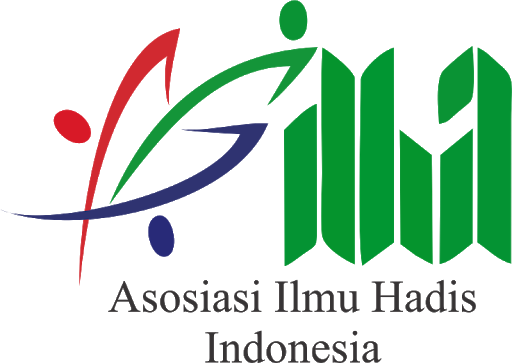Religious Awareness of Mabrur Hajj Pilgrims in Performing the Hajj Pilgrimage based on the Hadith of the Prophet
Kesadaran Beragama Jamaah Haji Mabrur dalam Melakukan Ibadah Haji berdasarkan Hadits Nabi
DOI:
https://doi.org/10.14421/livinghadis.2024.5529Keywords:
Hajj, Mabrur Hajj, Reception, Pilgrims Hajj, Hadith HajjAbstract
As one of the pillars of Islam, the Hajj has great urgency to be carried out by every Muslim who is considered to have the ability. Apart from being an obligation, the Hajj also has many advantages, as explained in the hadith of the Prophet Muhammad. This research examines the congregation's acceptance of the hadith on the virtues of the Hajj and its implementation in carrying out the Hajj pilgrimage through two problem formulations; first, what is the reception of the Hajj pilgrims towards the hadith; and second, what is the form of implementation of the hadith by the congregation? This question was analyzed using a qualitative approach with in-depth interview methods supported by data related to the pilgrims' understanding of the hadith of the virtues of the Hajj and the practices carried out during the Hajj pilgrimage. The research results show that the majority of Hajj pilgrims understand and accept the hadith and the virtues of Hajj well. They try to practice the teachings in the hadith, such as increasing worship, protecting themselves from immoral acts, and increasing spirituality during the Hajj. This shows the high awareness of Hajj pilgrims about carrying out the Hajj pilgrimage as well as possible. This research concludes that the congregation's acceptance of the hadith on the virtues of the Hajj is quite good, and they try to apply it in the implementation of the Hajj, so that this can contribute to a deeper understanding of the dynamics of people's spiritual life.
 Abstract viewed: 584 times
|
Abstract viewed: 584 times
|
 pdf downloaded = 462 times
pdf downloaded = 462 times
References
Abdullah, A. (2021). Makna Simbolik Tradisi Al-Barzanji Dalam Perspektif Sosiologis. Dinamika Penelitian: Media Komunikasi Penelitian Sosial Keagamaan, 21(02), 272–291. https://doi.org/10.21274/dinamika.2021.21.02.272-291
Alfiani, R. (2021). “Makna Mabrur Bagi Jama’ah Pasca Haji Perumnas Krapyak Semarang.” Skripsi, UIN Walisongo, Semarang.
Baqi, MFA (2021). Hadits Sahih Bukhari–Muslim Bab Haji. Elex Media Komputindo.
Basahel, S., Alsabban, A., & Yamin, M. (2021). Hajj and Umrah management during COVID-19. Jurnal Internasional Teknologi Informasi, 13(6), 2491–2495.
Caidi, N. (2019). Ibadah Haji. Jurnal Internasional Informasi, Keanekaragaman, & Inklusi, 3(1), 44–76.
CD. Ensiklopedi Hadis – Kitab 9 Imam
Collins-Kreiner, N., & Kliot, N. (2000). Wisata Ziarah di Tanah Suci: Ciri-ciri Perilaku Peziarah Kristiani. Jurnal Geo, 50(1), 55–67.
Colton, CW (1987). Kenyamanan, rekreasi, pariwisata. Pandangan interaksionisme simbolik. Sejarah Penelitian Pariwisata, 14(3), 345–360. https://doi.org/10.1016/0160-7383(87)90107-1
Danarta, A., Pradana, M.Y.A., Abror, I., & Yahya, N.E.P.S. (2024). Mendorong Agama dan Pariwisata Berkelanjutan sebagai Konsepsi Pengembangan Pariwisata Halal Indonesia. Majalah Manajemen Sosial dan Lingkungan, 18(7), e05920–e05920.
Dewi, S. K., & Akmaluddin, M. (2023). Broadcasting Umrah through the Hadith of Hajj Badal in the COVID-19 Pandemic Era. | Menyiarkan Umrah melalui Hadis Hajj Badal di Era Pandemi COVID-19. Jurnal Studi Ilmu-Ilmu Al-Qur’an Dan Hadis, 24(2), 231–252. https://doi.org/10.14421/qh.v24i2.4739
Izudin, A., Sriharini, S., & Khuluq, L. (2022). Developing Halal Tourism: The Case of Bongo Village, Gorontalo, Indonesia. Jurnal Internasional Pariwisata Religi dan Ziarah, 10(1), 35–45.
Jácome, VLM, Reyes, A.-P. L., Ochoa, T.-J. O., & Cevallos, R.-E. S.(2018). Motivasi peziarah wisata religi dan kepuasannya. Jurnal Internasional Tinjauan Bisnis Profesional: Int. J. Prof. Bus. Putaran., 3(1), 50–68.
Maknun, ML (2016). AMIYAH ARAB BAGI JAMARA HATI (Studi 8 KBIH Kabupaten/Kota Pekalongan 2015). Al-Qalam, 22(1), 167–176.
Manzilati, A. (2017). Metodologi penelitian kualitatif: Paradigma, metode, dan aplikasi. Universitas Brawijaya Press.
Mardliyah, I., & Wedi, A. (2021). Tradisi Ziarah ke Asta Juruan Batuputih Sumenep: Dari Mistisisme, Spiritualisme Sampai Kontestasinya. Konferensi Mahasiswa Internasional Ushuluddin dan Pemikiran Islam, 1(01), 14–26.
Mohd Rahim, M.S., Fata, A.Z.A., Basori, A.H., Rosman, A.S., Nizar, T.J., & Yusof, FWM (2011). Pengembangan simulasi 3D Tawaf untuk aplikasi pelatihan haji menggunakan lingkungan virtual. Konferensi Informatika Visual Internasional, 67–76.
Mueller, GH (1979). Pengertian rasionalitas dalam karya Max Weber. Jurnal Sosiologi Eropa, 20(1), 149–171. https://doi.org/10.1017/S0003975600003374
Muhlis, A., & Norkholis. (2016). Analisis Tindakan Max Weber: Hadits Hidup. Jurnal Living Hadis, 1(2), 242–258. http://ejournal.uin-suka.ac.id/ushuluddin/Living/article/download/1121/1023
Owaidah, AA, Olaru, D., Bennamoun, M., Sohel, F., & Khan, RN (2021). Pemodelan kerumunan massa menggunakan simulasi peristiwa diskrit: studi kasus ritual Tawaf dan Sayee yang terintegrasi selama haji. Akses IEEE, 9, 79424–79448.
Pantan, F., Benyamin, P. I., Handori, J., Sumarno, Y., & Sugiono, S. (2021). Resiliensi spiritual menghadapi disruption religious value di masa pandemi Covid-19 pada lembaga keagamaan. KURIOS (Jurnal Teologi Dan Pendidikan Agama Kristen), 7(2), 372–380.
Rafiq, A. (2021). The Living Quran: Teks dan Prakteknya dalam Fungsi Kitab Suci. Jurnal Studi Ilmu-Ilmu Al-Qur’an Dan Hadis, 22(2), 469–484.
Rahmawati, R., Nurhadi, Z. F., & Suseno, N. S. (2017). Makna Simbolik Tradisi Rebo Kasan. Jurnal Penelitian Komunikasi, 20(1), 61–74. https://doi.org/10.20422/jpk.v20i1.131
Sayadi, W., Prasojo, ZH, & Muaffaq, A. (2020). Teologi Jiḥiklan berdasarkan ḥadith: SAḥih sudut pandang Bukhari. Studi Teologi HTS, 76(4), TIDAK-NA.
Siregar, P. (2015). KRITERIA HAJI MABRUR DALAM TINJAUAN HADITS NABAWI (AnalisisIlmuMa’ani al-Hadits). Universitas Islam Negeri Sultan Syarif Kasim Riau.
Supraja, M. (2015). Alfred Schutz : Rekonstruksi Teori Tindakan Max Weber. Jurnal Pemikiran Sosiologi, 1(2), 81. https://doi.org/10.22146/jps.v1i2.23447
Tagliacozzo, E., & Toorawa, SM (2016). Haji: Ziarah dalam Islam. Pers Universitas Cambridge.
Umanailo, MCB (2020). Teori-Teori Max Weber. Max Weber, 1–4.
Weber, M. (1994). Agama, Etika, Protestan. 30(Januari), 3–18.
Yoga Adi Pradana, M., Wisadirana, D., & Imron Rozuli, A. (2024). Integrasi Nilai-Nilai Agama Islam dan Budaya Jawa Dalam Pengembangan Wisata Ziarah di Ngawonggo, Indonesia. Jurnal Internasional Pariwisata Religi dan Ziarah, 11(6), 11.
Yusuf, M. (2008). Haji dalam Al-Qur'an, Hadits dan Pengalaman Muslim. Tesis UIN Sunan Kalijaga. Yogyakarta.
Downloads
Published
Issue
Section
License
Copyright (c) 2024 Muhammad Yusup, Muhammad Mansur; Achmad Dahlan; Mahatva Yoga Adi Pradana

This work is licensed under a Creative Commons Attribution-ShareAlike 4.0 International License.
- Authors who publish with this journal agree to the following terms:
- Authors retain copyright and grant the journal right of first publication with the work simultaneously licensed under a Creative Commons Attribution License that allows others to share the work with an acknowledgement of the work's authorship and initial publication in this journal.
- Authors are able to enter into separate, additional contractual arrangements for the non-exclusive distribution of the journal's published version of the work (e.g., post it to an institutional repository or publish it in a book), with an acknowledgement of its initial publication in this journal.
- Authors are permitted and encouraged to post their work online (e.g., in institutional repositories or on their website) prior to and during the submission process, as it can lead to productive exchanges, as well as earlier and greater citation of published work.
















